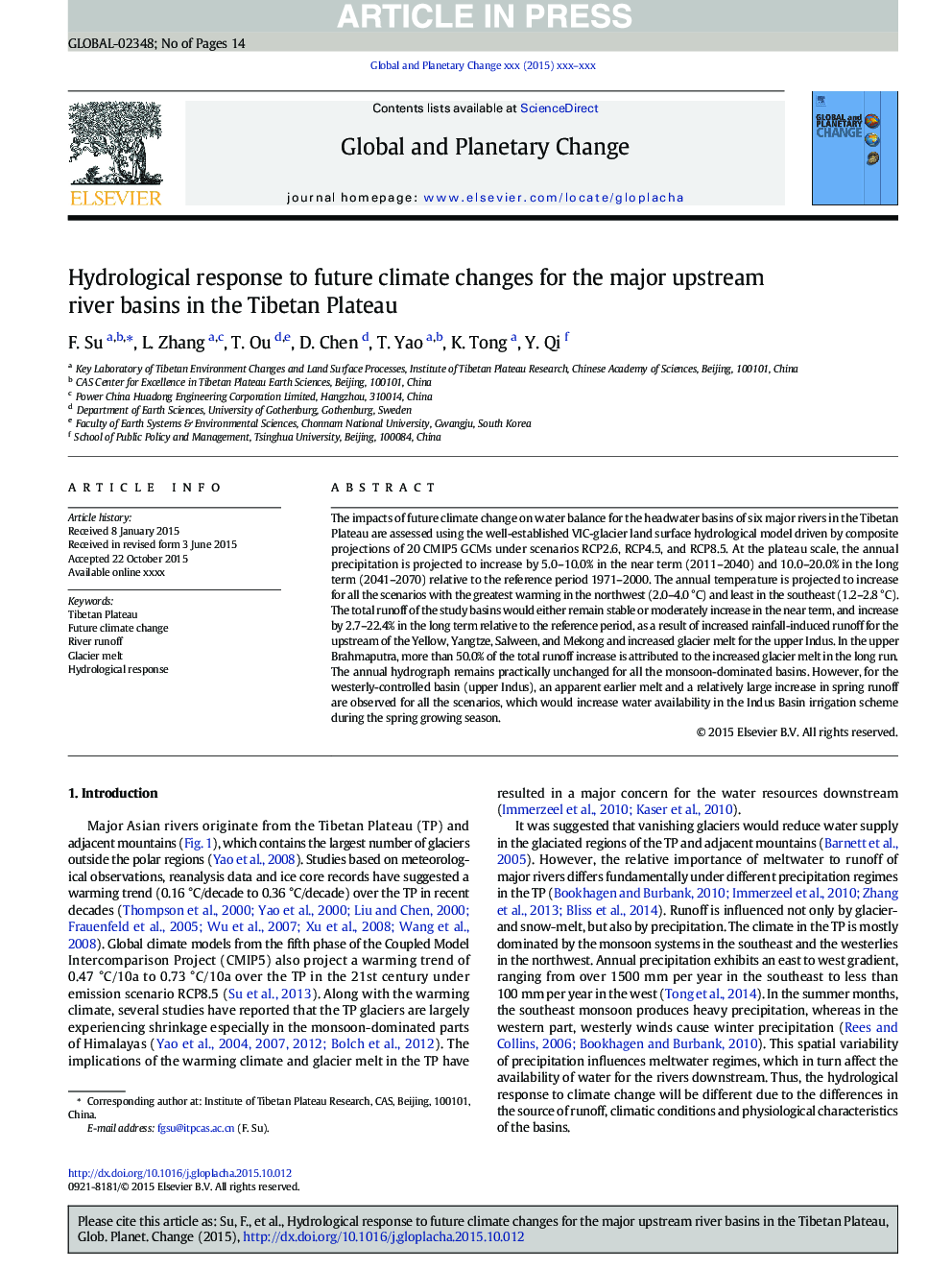| Article ID | Journal | Published Year | Pages | File Type |
|---|---|---|---|---|
| 6347937 | Global and Planetary Change | 2016 | 14 Pages |
Abstract
The impacts of future climate change on water balance for the headwater basins of six major rivers in the Tibetan Plateau are assessed using the well-established VIC-glacier land surface hydrological model driven by composite projections of 20 CMIP5 GCMs under scenarios RCP2.6, RCP4.5, and RCP8.5. At the plateau scale, the annual precipitation is projected to increase by 5.0-10.0% in the near term (2011-2040) and 10.0-20.0% in the long term (2041-2070) relative to the reference period 1971-2000. The annual temperature is projected to increase for all the scenarios with the greatest warming in the northwest (2.0-4.0 °C) and least in the southeast (1.2-2.8 °C). The total runoff of the study basins would either remain stable or moderately increase in the near term, and increase by 2.7-22.4% in the long term relative to the reference period, as a result of increased rainfall-induced runoff for the upstream of the Yellow, Yangtze, Salween, and Mekong and increased glacier melt for the upper Indus. In the upper Brahmaputra, more than 50.0% of the total runoff increase is attributed to the increased glacier melt in the long run. The annual hydrograph remains practically unchanged for all the monsoon-dominated basins. However, for the westerly-controlled basin (upper Indus), an apparent earlier melt and a relatively large increase in spring runoff are observed for all the scenarios, which would increase water availability in the Indus Basin irrigation scheme during the spring growing season.
Related Topics
Physical Sciences and Engineering
Earth and Planetary Sciences
Earth-Surface Processes
Authors
F. Su, L. Zhang, T. Ou, D. Chen, T. Yao, K. Tong, Y. Qi,
